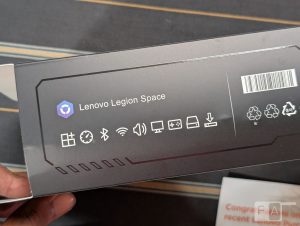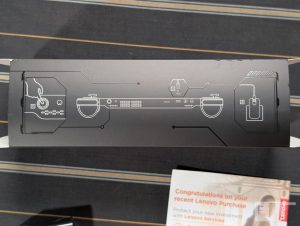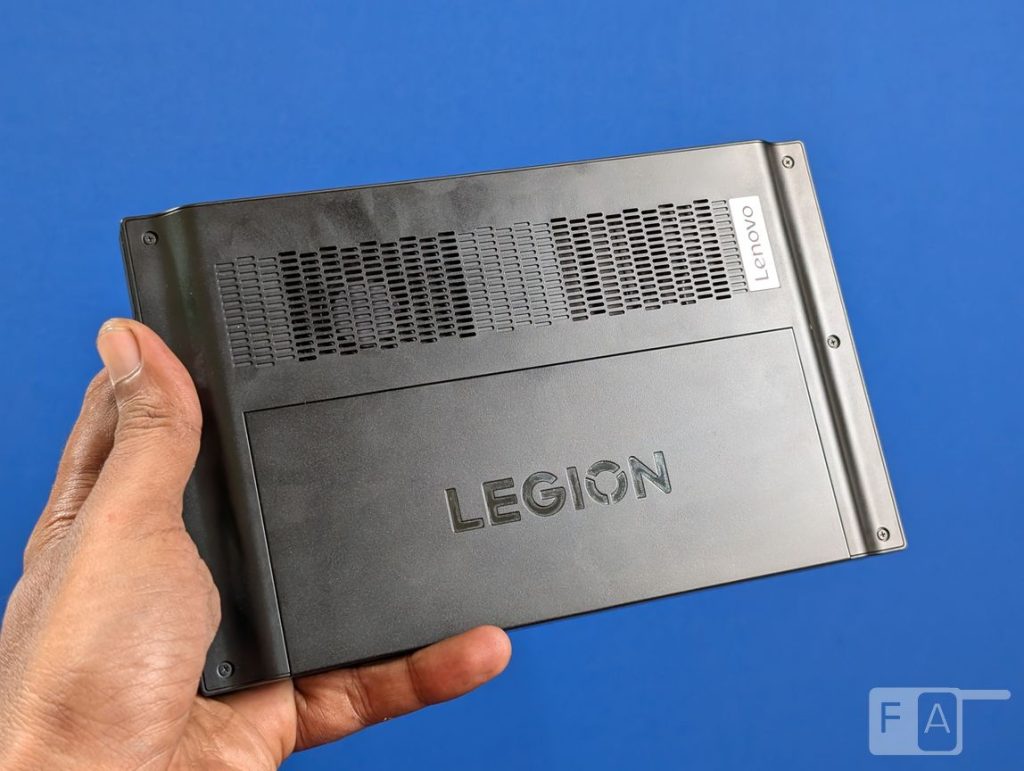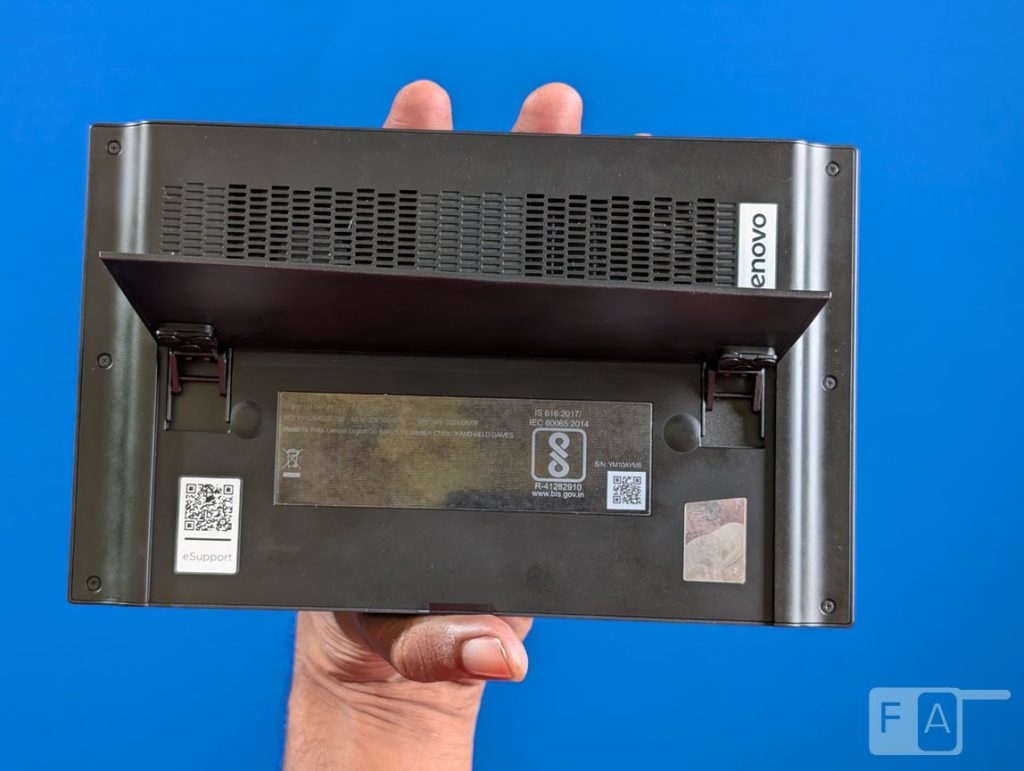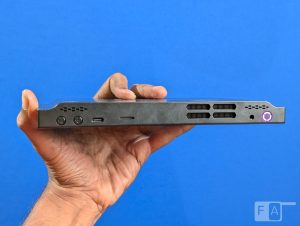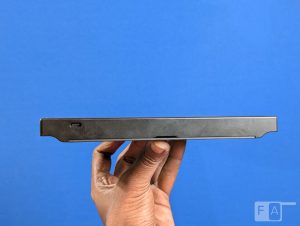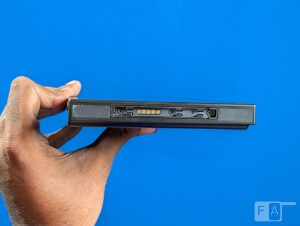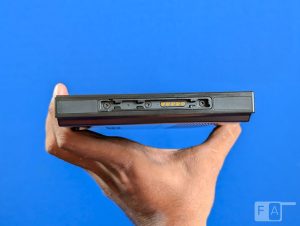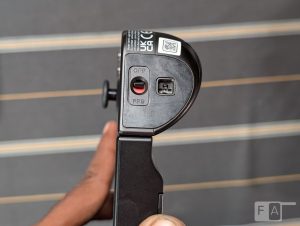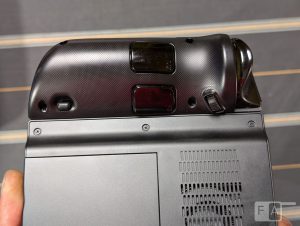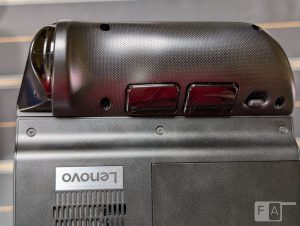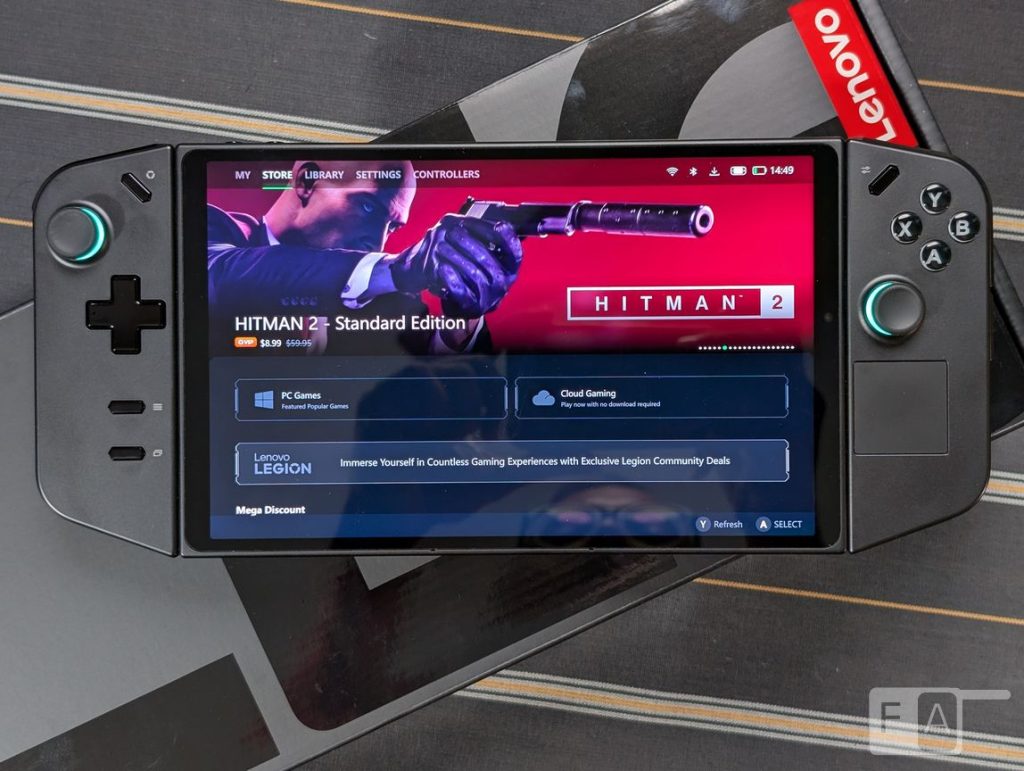
Gaming hardware is undergoing a radical miniaturization process, accelerated by the release of Valve’s Steam deck, which opened the gates for a form factor that has long been the favorite of nomadic PC gamers. “Handheld Gaming” machines got a boost with the release of the Nintendo Switch way back in 2017. Then Steamdeck happened in 2022. Since then, the market has expanded to include the PC manufacturers who have their own gaming brands. Companies like Lenovo are now able to expand into new territory, getting a boost beyond laptops, custom PCs and gaming accessories. Lenovo’s Legion is analogous to ASUS’ ROG Ally series and MSI Claw series. Lenovo has chosen to go for some interesting design decisions and are now firmly in the scene. Technically, this category of devices is still in the early adopter phase, so let’s dive in to the review, assuming we know this category is in its alpha stage and that battery life is the biggest hurdle to a seamless experience.
Our initial expectations for this device were definitely tuned for sub-par battery life, but the inclusion of detachable controllers and a larger 8.8-inch screen increased our expectations of a possibility that the higher resolution, high refresh rate screen could be a game changer. Also, we were looking forward to seeing a good pair of controllers and overall ergonomics. This device sits in the same class as the ROG Ally and the MSI Claw, but differs in design and execution of its gaming-related ideas. In the current landscape, the Legion Go sits right in the upper middle range of handhelds purely due to its size. Our first impressions were that – wow, this is a big one. We didn’t expect the 8.8-inch screen to be this big, nor the device with its detachable controllers to be this thick.
Unboxing
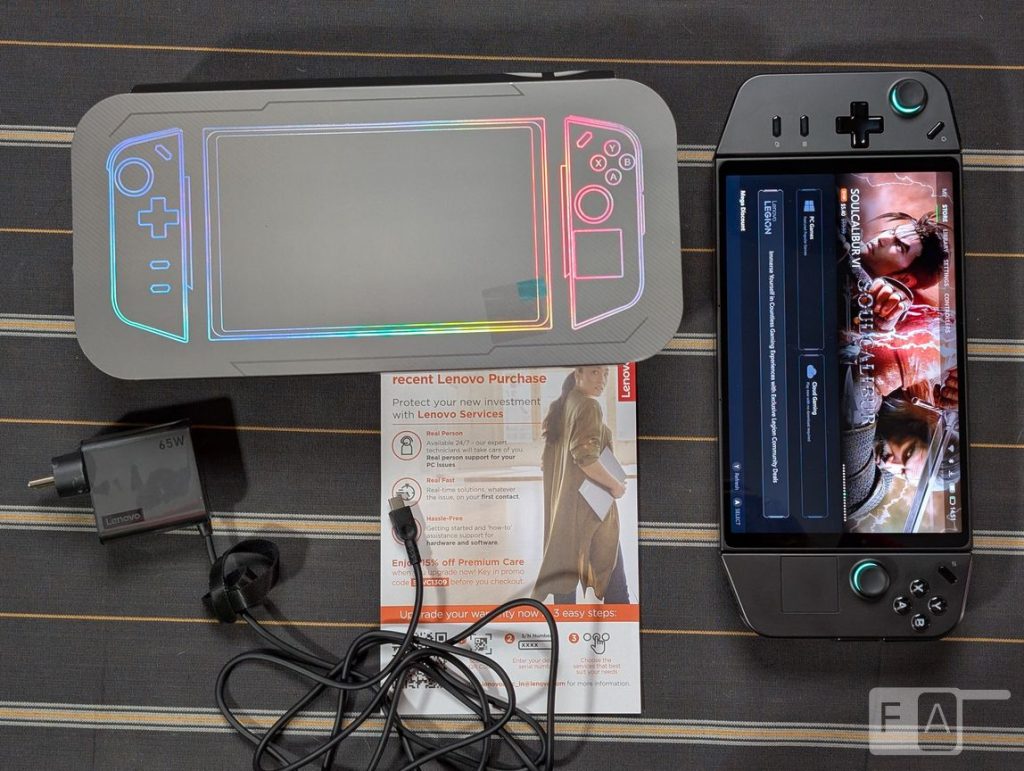
The Legion GO comes in a sizeable box, with the usual flair and aesthetics of a gaming device. Inside the box is a hard carry case that is given as a part of the packaging, a travel-friendly, sturdy and well-designed case that is fit for this device. It’s definitely up there in the premium category. Noteworthy accessories are all available for extra money because you do get a complete package in the box, with the only addition being a holder for turning the right side of the controller into an FPS-based solution. More on that later, apart from this, you get a 65W UBS C type proprietary charging adapter.
Build, Aesthetics and Ergonomics

When it comes to aesthetics, the Legion Go is a chunky boi. It definitely has a much lesser “gamer” aesthetic than its competitors, who like to add flashy lines and multi-color LEDs of various kinds. Compared to those, the Legion Go is definitely a muted design. But as we already mentioned, the chunkiness is very noticeable when seen in person. The center part of the machine is undoubtedly the heaviest part of the gadget where all sorts of things are packed together including the batteries and the fans and the motherboard and the GPU, RAM, SSD etc. It’s 40.7mm thick with controller, 20mm without and weighs 854g. Compared to a Steamdeck’s 670g or ROG’s 608g or Claw’s 675g, it is definitely heavier and that’s why it earned the title “Chunky Boi”.
One of the side effects of such a large and heavy gaming handheld form factor is that you definitely get better thermal management but at the same time, be ready for pain. Extended gaming sessions would need a separate work out regime for your muscles, owing to the uncomfortable weight distribution and the not-so-perfect placement of the controller joystick and buttons on either sides. It is definitely a tough-to-handle gaming device that deservedly gains a kickstand on its back, which makes it super easy to keep it on a flat surface and still use the joystick, either in detached form on it attached form. With so many moving parts, though, the build quality is surprisingly well done and solid. Be it the materials used or the construction quality, we would say Lenovo has done it well enough for a premium mid-range experience. The plastics could be better though, but the metallic elements are other core hard-plastic elements are really well done. The feel of touch is not cheap, it felt very much like a premium device in our experience.
Screen and Speakers
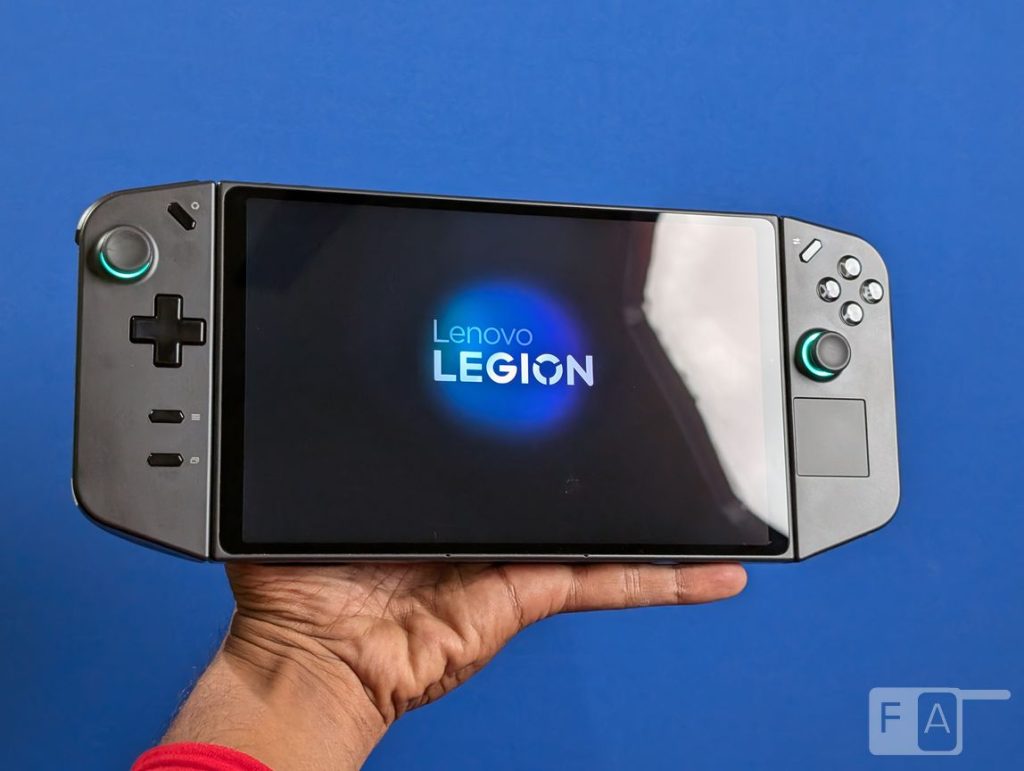
The screen is a revelation on the Legion Go because very rarely do you see an amazing screen on a handheld device, primary due to the computing restrictions. Yes, there is a whopping QHD resolution 144Hz LCD touchscreen display here that is one of the best displays we have seen on a handheld. With 500 nits of brightness and 97% DCI-P3 color gamut coverage, it is right up there with the best, easily beating all the other handhelds in the market. Of course, this doesn’t mean you can play all games in QHD and super high frame rates, for that you definitely need a 100W power package, which is not ideal for handheld gaming. But compared to the other screens which are mostly in HD or Full HD, this screen is sharp, bright, colorful and really good for high-definition casual gaming. We didn’t notice any backlight bleeding or ghosting issues that are a detriment for continuous gaming. The 144Hz refresh rate performance is excellent, with easy-to-control toggle in the Legion Space, easily accessed by the settings button on the right controller.
When it comes to audio output, we are not sure why Lenovo has completely ignored this space, because what we get is small tinny speakers that pack no punch. It is definitely possible to pack in some good speakers that are available in the likes of Android tablets like the OnePlus Pad 2. But somehow, we are kind of forced to use external audio solutions or plainly use a 3.5mm headset, which is something most gamers will already have. But certainly, this kills the notion of the Legion Go being a nice multimedia device. Such a great screen with kickstand, but Lenovo seems to have wasted an incredible opportunity here by not giving us a decent speaker set. We hope this is fixed in the next hardware refresh.
Performance & Power
The Legion Go’s thermal management offers four preset modes: Performance (20W), Balanced (15W), Quiet (8W), and a customizable option ranging from 5-30W. Access these modes through the Legion Space app or via the Legion L + Y key combination. Performance mode, best suited for AC power, prioritizes output with expected fan noise. Balanced mode targets on-the-go users juggling tasks. Quiet mode reduces acoustics and extends battery life. The custom mode allows for granular control over the Thermal Design Power (TDP), catering to specific use cases.
Lenovo’s choice of the AMD Ryzen Z1 Extreme processor for the Legion Go is a significant move. This powerful APU, also found in the ASUS ROG Ally 2, puts it ahead of the Steam Deck in raw processing power and graphical capabilities. Further bolstering its performance, the Legion Go comes equipped with 16GB of LPDDR5x-7500 RAM, ensuring smooth multitasking and optimal performance even with demanding games. While the RAM is soldered and therefore not upgradeable, the inclusion of 512GB of speedy M.2 2242 SSD storage provides ample space for a sizeable game library and ensures quick loading times. While the integrated RDNA 3 graphics may not rival a dedicated GPU, it’s more than capable of handling demanding AAA titles at respectable settings. This combination of CPU, RAM, and SSD positions the Legion Go as a true competitor in the high-performance handheld gaming space, though its ultimate success will depend on factors beyond just these core specifications.
Benchmarks

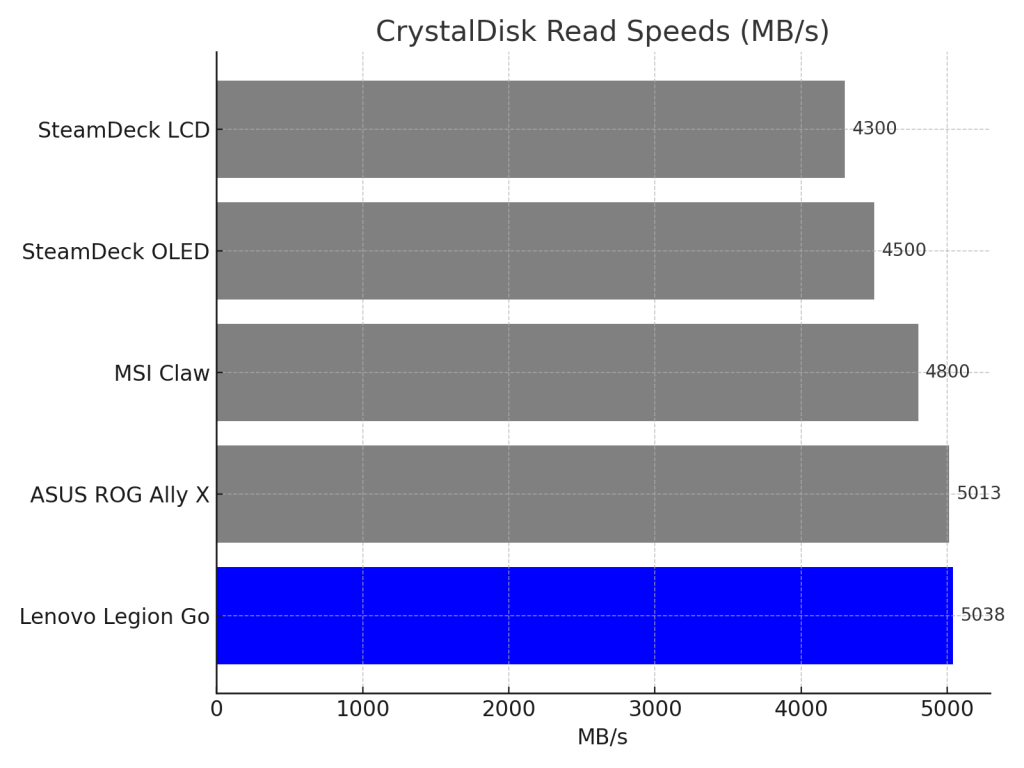
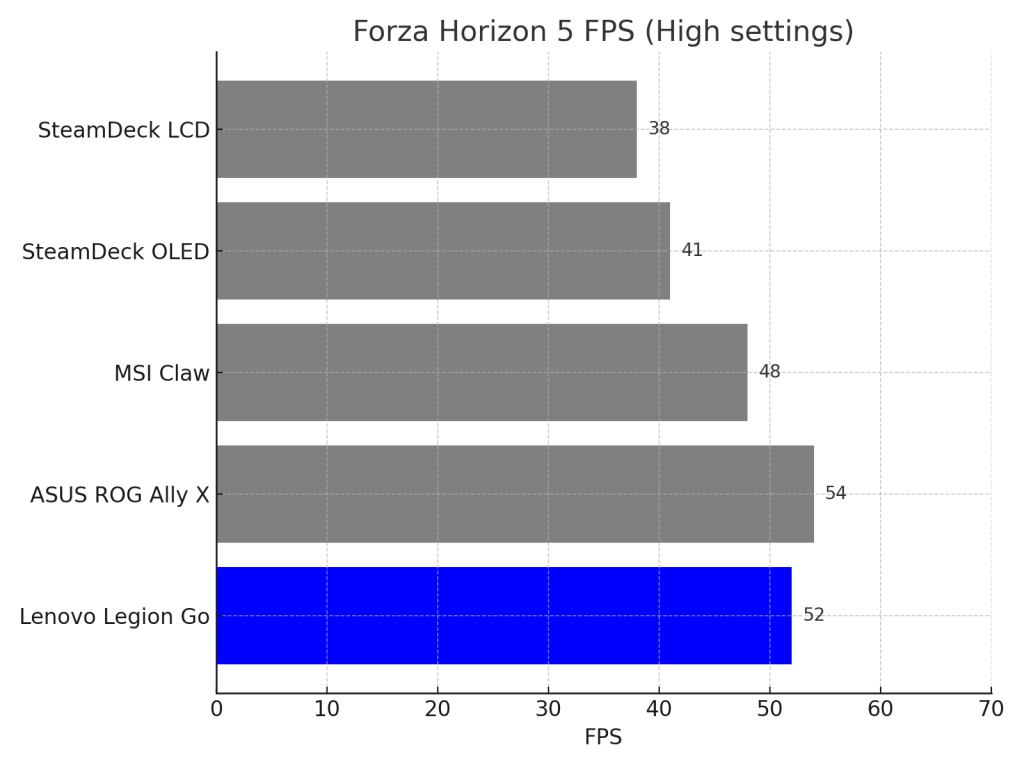
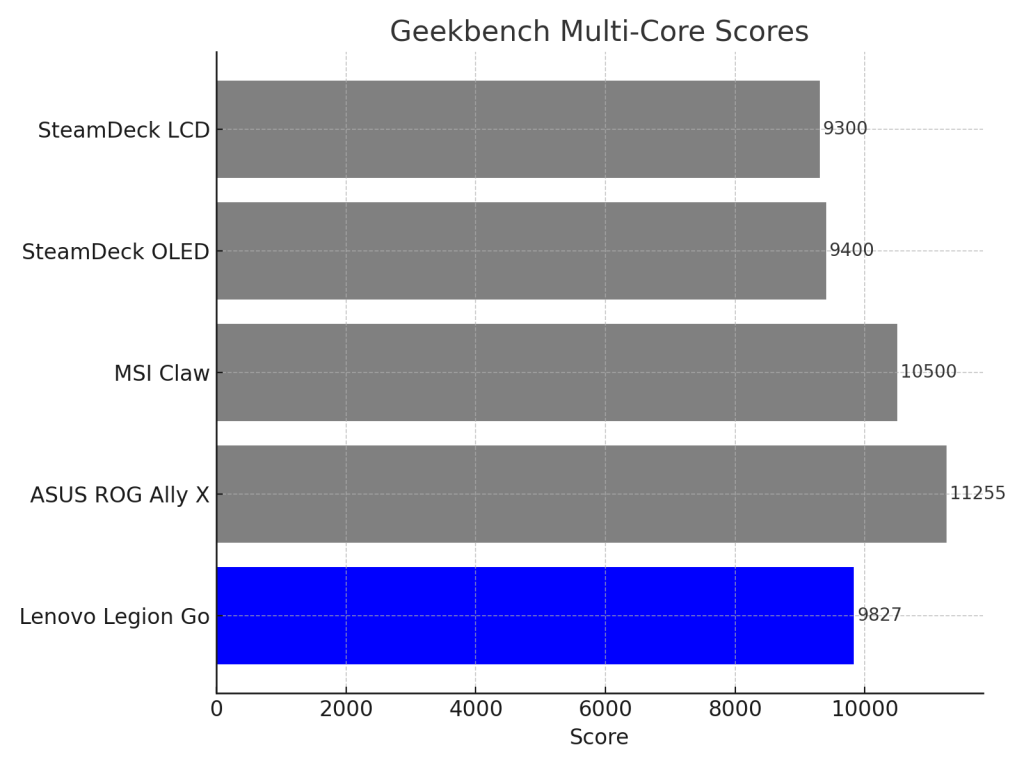
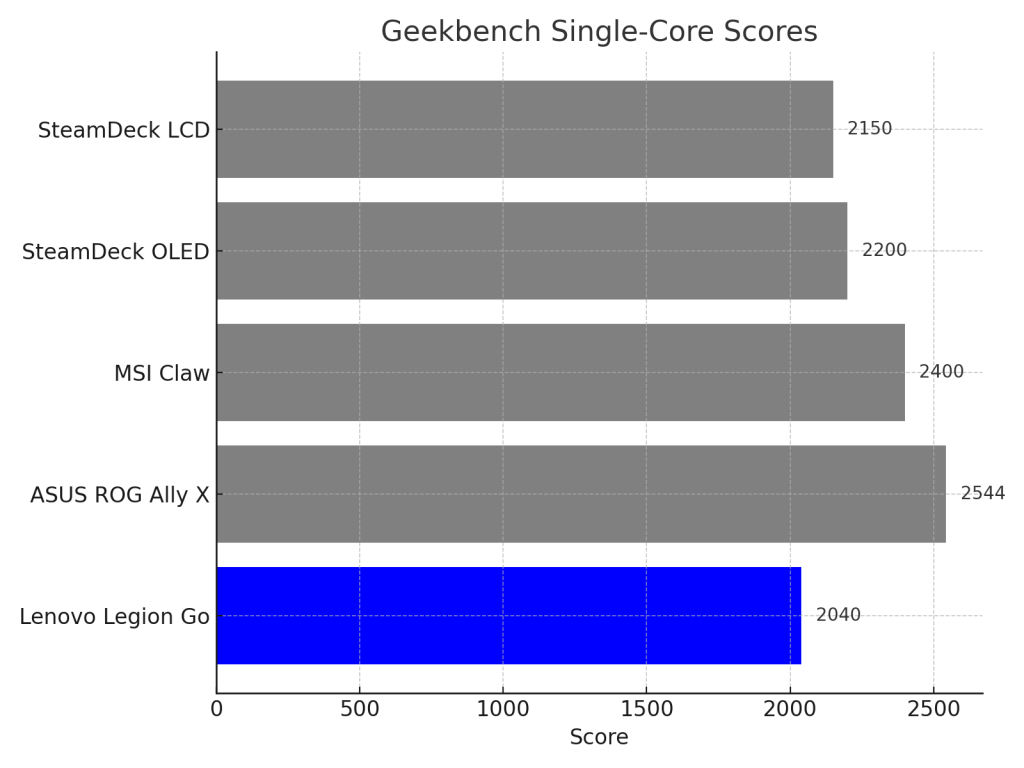
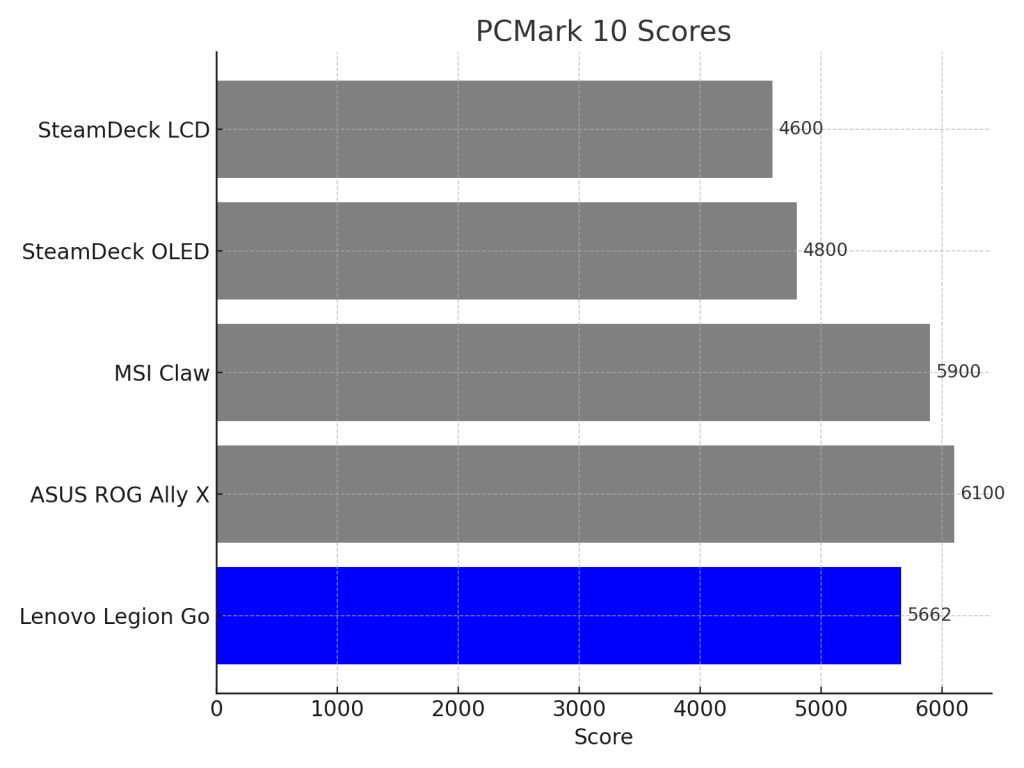
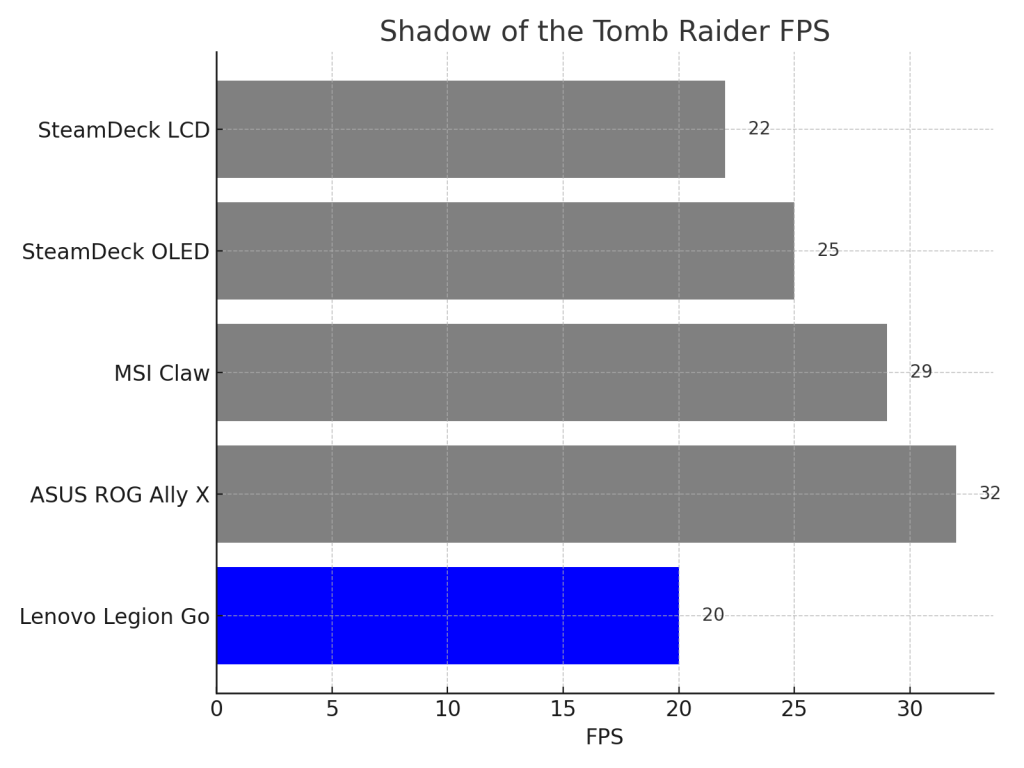 These benchmarks were run under battery power, mainly to stress the device to its maximum levels without power, and it was in the performance (20W TDP) mode all the time. No other changes were made. Surely, the Legion Go holds its own when it comes to raw numbers where it seems to match with the much lower-res devices like Steam deck and ROG Ally X. In our experience, we played AAA games that all performed surprisingly well on the Legion Go, surprising us with the amount of power that is packed under the hood. Seriously, when we thought of how chunky this gadget was, we did not expect it to pack this much power. It even played simple competitive games like Rocket League, which have their own demanding graphic settings, super smoothly at a constant average of above 144 fps at Quad HD resolution. It means only one thing, that the APU inside is super powerful.
These benchmarks were run under battery power, mainly to stress the device to its maximum levels without power, and it was in the performance (20W TDP) mode all the time. No other changes were made. Surely, the Legion Go holds its own when it comes to raw numbers where it seems to match with the much lower-res devices like Steam deck and ROG Ally X. In our experience, we played AAA games that all performed surprisingly well on the Legion Go, surprising us with the amount of power that is packed under the hood. Seriously, when we thought of how chunky this gadget was, we did not expect it to pack this much power. It even played simple competitive games like Rocket League, which have their own demanding graphic settings, super smoothly at a constant average of above 144 fps at Quad HD resolution. It means only one thing, that the APU inside is super powerful.
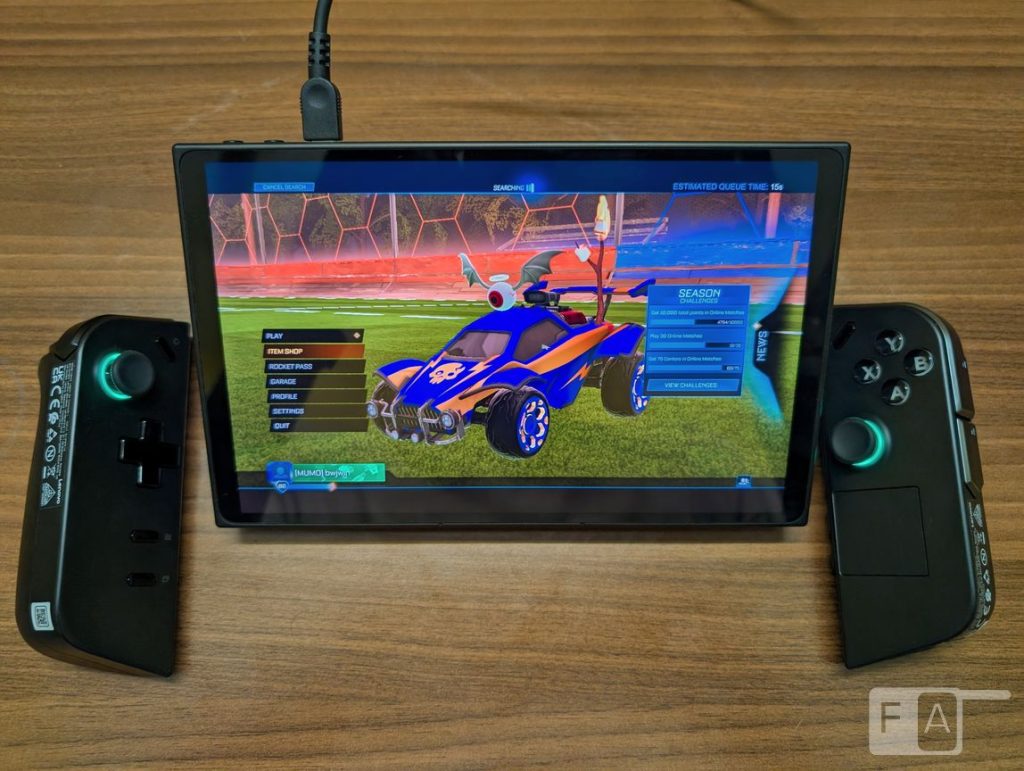
We tested AAA games like Forza Horizon 5 and Shadow of the Tomb Raider, both of which ran with really eye candy settings at respectable frame rates. Forza particularly performed really well at high graphics settings, as evidenced by the benchmarks. When it came to thermal performance, there is ample space for the fans and the hot air to blow out of the device from the top. As expected it works extremely efficiently to lessen the throttling effects, but at the same time, it is really noticeable in the audible spectrum where at full speed you can clearly listen to the whirring sounds. Also, the feeling on hot air constantly blowing out at the top might be uncomfortable at first to witness but slowly, you will get used to it.
Battery Life
Let’s be real here, folks. The battery life of a gaming device is not going to be great. With this in mind, we went in with very low expectations, and our expectations were proven right by the battery performance. First of all, a constant 20W power draw in performance mode or sometimes, a custom 30W power draw is needed for lag-free AAA gaming. In that case, get ready for a 2 and a half hour gaming time, with 1 hour worth of full performance gaming and the rest in half performance. If this is the kind of landscape we are dealing with, then we have to take it in a positive light by assuming that changes will definitely come, with battery technology increasingly gaining new tech like Silicon Carbide and GaN based fast chargers. Also, it is not so bad an idea that you can game for 2 hours and give it a rest, because the charging with the in-box 65W fast charger is quite rapid. Even better is if you use a PD charger, the device, when turned off, can charge at a whopping 92W and quickly bring the charge levels to 100. In our experience, this kind of experience led to think whether using the Legion Go for gaming has become sort of a “powerplay” over, like in T20 cricket. It’s like the player will come in, swing the bat for fours and sixes, then gets out in the middle of the game. Now, the title makes sense, right?
Features & Functionality
The Legion Go’s hardware is chock full of elements that are typical of a gaming handheld machine that is also a Windows PC.
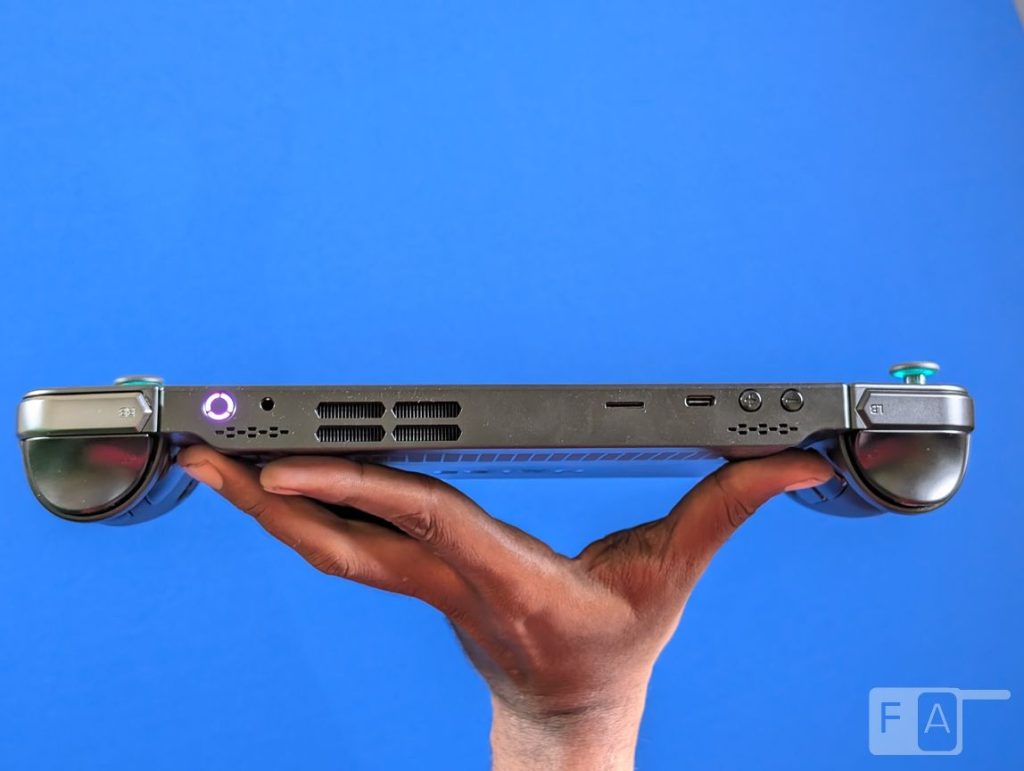
- The detachable controllers each have a Hall effect joystick, a D-pad, ABXY buttons, shoulder buttons (LB/RB, LT/RT), and a clickable trackpad.
- The right controller houses a unique touchpad that can be used for precise mouse-like control in FPS Mode.
- The main device has two USB-C ports located on the bottom edge, flanking a 3.5mm audio jack.
- A power button and volume rocker are positioned on the top edge.
- The microSD card slot is conveniently placed on the left side.
- Dedicated “Legion L” and “Legion R” buttons provide quick access to the Legion Space software and a Quick Settings sidebar menu, respectively.

It features Wi-Fi 6E (802.11ax), the latest standard in wireless networking, ensuring high bandwidth and low latency for online gaming and streaming. Bluetooth 5.1 is also onboard for connecting peripherals like headsets, controllers, and keyboards. Physically, the device includes two versatile USB4 (40Gbps) ports, each capable of data transfer, Power Delivery 3.0 for fast charging, and DisplayPort 1.4 for video output to external displays. Interestingly, the Legion Go also incorporates two 5-point pogo pin connectors, hinting at potential future accessories or docking solutions.
Legion Space is a software launcher specifically designed for the Legion Go. It acts as a central hub, allowing gamers to seamlessly access and manage various gaming platforms and their game libraries. Through Legion Space, we can conveniently explore new games, purchase and launch games, and access all their cloud games from one location. It also provides a user-friendly interface for adjusting device settings, customizing controls, and optimizing gaming performance. This is the only space where the controller works, so having a dedicated button for this function is definitely a good thing. Once it is launched, the same button can switch to the usual Windows Desktop as well. There is another settings button on the right side which reveals the gaming-focused and richly detailed quick settings option which doesn’t require the Legion Space to be open. All kinds of controls, right from fan speed to TDP control, is here, available with one tap of a button.
The Real-World Test
The device is portable enough to be carried inside one-day backpacks, which are usually around 5 to 15L capacity. When inside the sturdy hard case, it fully fills it leaving no space for the charger, so it should be carried separately. But it checks out, if there’s a PD charger everywhere you go. We are sure this gaming machine is not perfect for long flights because it doesn’t have the endurance of a laptop or a tablet, but at the same time, it would be possible to continue to charge this device with just a good powerbank. The kickstand works great even in cramped spaces, so it is great for keeping on lots of different kinds of surfaces. Apart from gaming though, the Legion Go is not exciting for everyday work or casual multimedia consumption. Although the display is great, the speakers are not, so media consumption is tiresome for having to use a separate audio device and manage the weight as well. Oh, and if needed, the front facing camera can help you finish your meetings if there is a problem with your main work device. In that sense, you can actually edit video on this device, if you connect a monitor to it and extend or duplicate its display. It is definitely powerful enough to handle all kinds of media work or even 3D work, so what if designers use it? That’s the kind of niche markets where such a device could excel.
Overall Value
The pricing must include the fact that Legion Go comes with a complimentary 3-month Xbox Game Pass Ultimate membership and access to the Gamesplanet store, which offers discounts on select games for users with a Lenovo ID.
In Flipkart, Legion Go from Lenovo is available for Rs. 89,900, which is a very attractive price in the current market, when you consider the fact that top end phones are costlier. But again, this is basically a powerful Windows PC in a handheld gaming PC formfactor, so spending for that would be a gamer territory move, and ALSO an early adopter move. The form factor is new and untested, with feedback loops just starting to begin. Hence, kindly adjust your expectations accordingly and expect amateur designs to be the norm.
If you’re looking for a gaming handheld machine that is also your secondary media creation machine, then the Lenovo Legion Go, with its transforming form factor of removable gaming controllers, might be the best option out there. It has got the performance you can expect out of a leading handheld machine, can back you up for Windows-related scenarios and also provide a lot of AAA entertainment. It’s for people who like the scenario of a T20 powerplay, where a mega hitter batsman and a focused bowler face-off in the ultimate experience. Gaming offers thrills, competitiveness, and ultimately crafted performance, which is becoming an art in which major players have emerged under the phenomenon of e-sports. If you’re into such things, and you’re also interested in content creation where you like to have a backup machine that can handle media, that has a really nice high-res color-accurate display and high performance for things like video editing.

